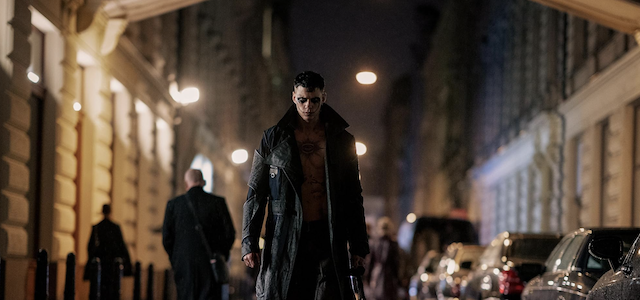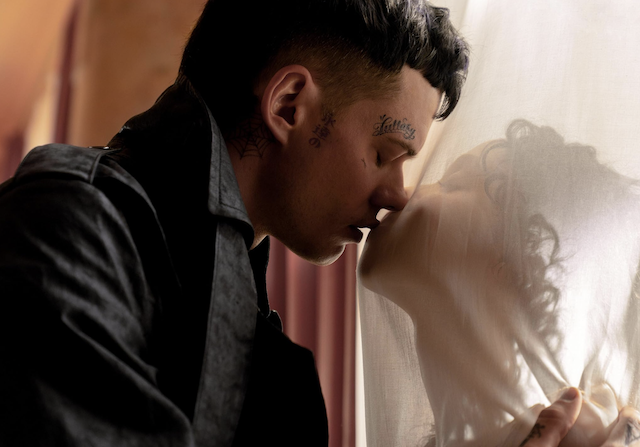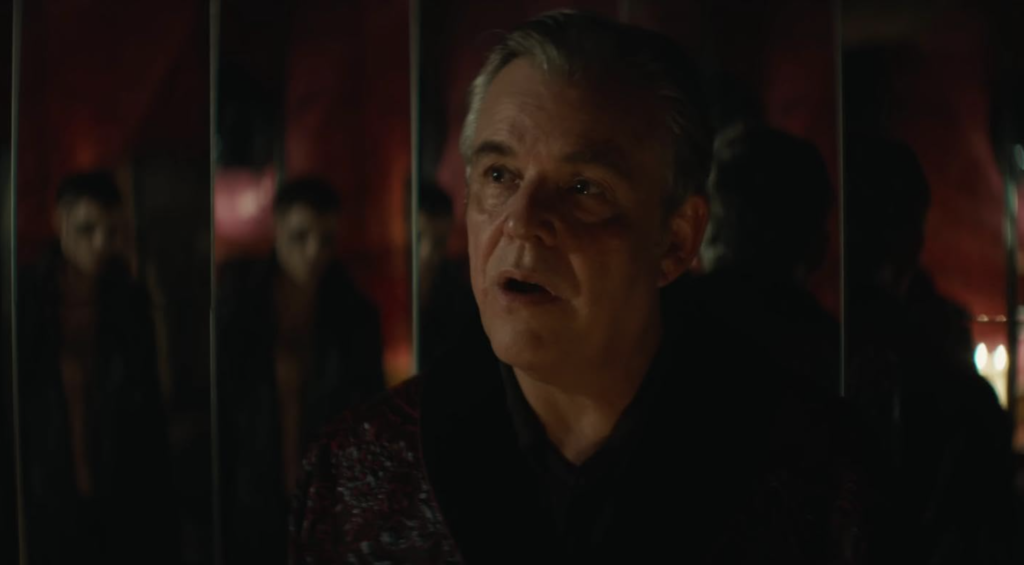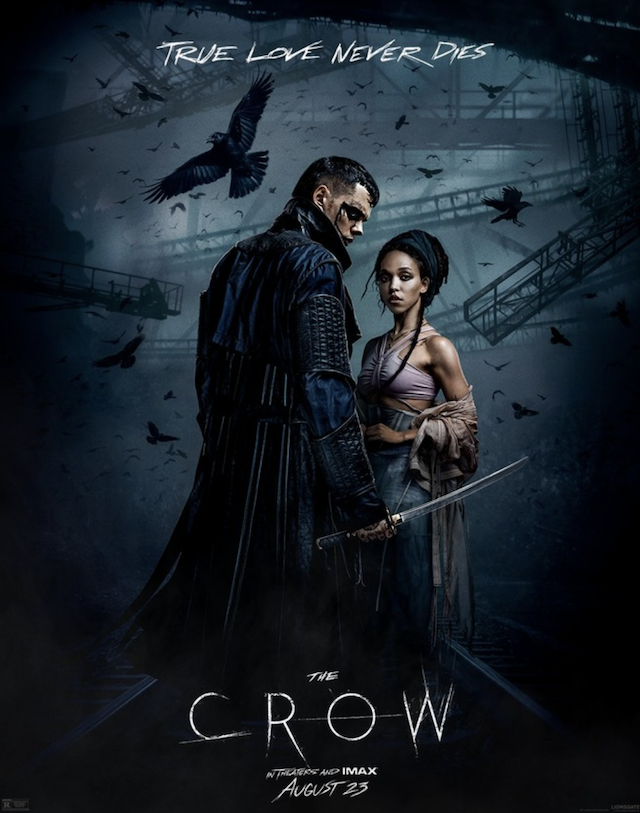
©Courtesy of Lionsgate
It is not fair that the shadow of Brandon Lee still looms over this new movie version of The Crow, because Vincent Perez, Eric Mabius, Edward Furlong, and Mark Dacascos all played the risen avenger in the sequels and one-season TV series that followed the tragic 1994 film. However, life is not fair—and Lee’s posthumous Crow remains an eerily symbolic goth icon of the mid-1990s. Clearly, aesthetic choices were made to differentiate the latest adaptation of the James O’Barr’s comic books, but director Rupert Sanders necessarily maintains a similarly sinister tone throughout The Crow (2024), which opens today nationwide.
As we see from the brief prologue (whose hardscrabble desert setting might have some viewers wondering if they are in the right theater), this new Eric Draven always lived a tortured life, even as a young child. He only briefly experienced joy after meeting Shelly Webster, ironically in a prison-like drug rehab facility.
Webster accepted her incarceration, naively hoping the high-security would protect her from the demonic Vincent Roeg. The supernatural villain amassed great wealth and influence, as the result of a Faustian bargain. Roeg attained immortality, by serving as a soul-collector for Satan. Employing infernal powers, he identifies the small seeds of depravity within typical, largely innocent souls. Using his eerie soul-whisperer voice, Roeg brainwashes his victims into perpetrating the damnation-worthy crimes they would not otherwise commit, allowing him to thereby collect Hell’s due.
 ©Courtesy of Lionsgate
©Courtesy of Lionsgate
One of the hedonistic party people in Webster’s circle sent her a life-endangering video of Roeg employing his unusual talents. When his enforcers find the escaped Webster they kill Draven along with her, but while she consigned to eternal torment, he wakes in a purgatory-like plane. The mysterious spirit guide Kronos explains Draven’s love is so pure, he can come back “with the crows,” “to put the wrong things right.” If he kills all those responsible for Webster’s death, he can save her from her unjust damnation.
Even though Draven has escaped death, Roeg’s uncanny nature makes him a ferocious adversary. However, the henchmen serving him are quite mortal. Indeed, Sanders and stunt coordinator Adam Horton impressively stage a grand showdown at the opera that induces Matrix flashbacks (in a good way), by pitting the trenchcoated Crow against hordes of more formally-attired bad guys.
Some of the themes screenwriters Zach Baylin and William Josef Schneider develop are even darker and more disturbing than those of the original 1994 film. Roeg’s eternal entrapment raises villainy to profoundly evil levels. Just the idea of him is terrifying, which is why the restraint of Danny Huston’s cold-blooded performance seems like such a strangely missed opportunity. One might expect more flamboyant scenery-chewing from such a Mephistophelean figure. However, Laura Birn has some standout moments as Roeg’s somewhat remorseful lieutenant, Marion.
Frankly, the ardent purity of Draven and Webster’s mutual love for each never feels adequately established (the entire relationship appears tragically short-lived). Arguably, the brief but horrifying flashbacks in Alex Proyas’s The Crow were more effective in this regard (while making do with the completed footage available after Lee’s untimely death).

©Courtesy of Lionsgate
Some fans of the comics might be disappointed the Skull Cowboy (who was played by cult-favorite Michael Berryman in scenes that had to be scrapped, to create a cohesive narrative with the limited footage of Lee) does not appear in Sanders’ re-make-re-imagining-re-tooling either. However, the roughly equivalent character of Kronos, forcefully but vaguely unnervingly portrayed by Sami Bouajila, considerably helps the new film establish its own identity. Among the franchise’s fandom, the new film’s defenders will likely emphasize the distinctive scenes of Bouajila laying down the law in the surreal liminal space.
On the other hand, detractors will likely focus on Bill Skarsgard’s comparatively weaker presence as the Crow. He seems lacks the powerful aura Lee so potently projected (which would admittedly be true of most people). If you were actively engaged with pop culture in the 90s, you should recall a time when every other guest you saw at a Halloween party was decked out like the Crow—largely because of Lee’s memorable performance (and what he represented, as his father’s son).
Further complicating the on-screen chemistry, FKA twigs (no capitalization) seems challenged in her love scenes with Skarsgard, who more successfully expresses Draven’s passion and tenderness. However, she radiates weird vibes and a fragile vulnerability that aptly suit the franchise.
The world rendered in this version is more realistic and less stylized, but it is not a complete and total departure from Proyas’ original film. In fact, Sanders and company clearly understand when the franchise addresses subjects like true love and the immortal soul, it is not idle chatter. If anything, the horror elements stand out more this time around, but Sanders probably best executes the action sequences.
Regardless, watching this resurrection of The Crow might spur some viewers to take a deep dive into the franchise’s other releases and formats, which indicates a degree of success. Recommended to mature audiences for the action and its serious treatment of some very weighty themes, The Crow (2024) opens today (8/23) in theaters nationwide.

Grade: B-
Check out more of Joe’s articles.
Here’s the trailer of the film.

